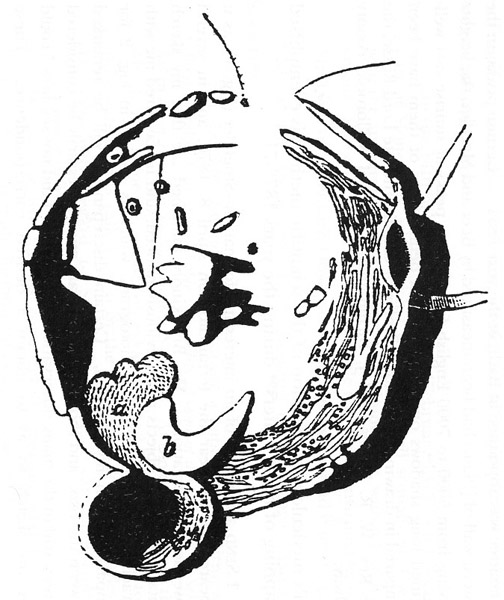|
|
| (2 intermediate revisions by the same user not shown) |
| Line 1: |
Line 1: |
| | __NOTOC__ | | __NOTOC__ |
| | =The Man, not the Crater= | | =The Man, not the Crater= |
| | + | <!-- Start of content --> |
| | <div class="post" id="post-1355"> | | <div class="post" id="post-1355"> |
| | | | |
| Line 6: |
Line 7: |
| | <p>[[File:Gassendi-birmingham.jpeg|Gassendi-birmingham.jpeg]]<br /> | | <p>[[File:Gassendi-birmingham.jpeg|Gassendi-birmingham.jpeg]]<br /> |
| | <em>drawing of Gassendi (south up) by John Birmingham, published in </em><em>The English Mechanic</em> in 1872; contributed by [mailto:pmohr@indigo.ie Paul Mohr], Galway, Ireland</p> | | <em>drawing of Gassendi (south up) by John Birmingham, published in </em><em>The English Mechanic</em> in 1872; contributed by [mailto:pmohr@indigo.ie Paul Mohr], Galway, Ireland</p> |
| − | <p>Better known for his discovery of the 1866 nova, T Coronae Borealis, and for the two editions of his <em>Catalogue of the Red Stars</em>, John Birmingham (1816-1884) was an amateur astronomer resident in the West of Ireland. During the years 1870-71 he gave much of his observing time to scrutinising and sketching lunar craters, including Gassendi, Stoeffler and the Plato region. His only equipment was a 4-1/2 inch Cooke refractor and an exceptional eye. A correspondent with Julius Schmidt in Athens, he entered the 1866 Linné ‘eruption’ debate, and later wrote a full-length [http://www.lpod.org/?page_id=1358 review] in the <em>Observatory</em> of Schmidt’s 1878 great lunar map. [http://the-moon.wikispaces.com/Birmingham Birmingham crater] (not the ‘walled’ area originally assigned to his name) is barely visible under the debris ejected from Anaxagoras and Plato, appropriately matching the obscurity that descended on astronomer-geologist-poet-apologist-humorist Birmingham and his work after his death. </p> | + | <p>Better known for his discovery of the 1866 nova, T Coronae Borealis, and for the two editions of his <em>Catalogue of the Red Stars</em>, John Birmingham (1816-1884) was an amateur astronomer resident in the West of Ireland. During the years 1870-71 he gave much of his observing time to scrutinising and sketching lunar craters, including Gassendi, Stoeffler and the Plato region. His only equipment was a 4-1/2 inch Cooke refractor and an exceptional eye. A correspondent with Julius Schmidt in Athens, he entered the 1866 Linné ‘eruption’ debate, and later wrote a full-length [http://www.lpod.org/?page_id=1358 review] in the <em>Observatory</em> of Schmidt’s 1878 great lunar map. [https://the-moon.us/wiki/Birmingham Birmingham crater] (not the ‘walled’ area originally assigned to his name) is barely visible under the debris ejected from Anaxagoras and Plato, appropriately matching the obscurity that descended on astronomer-geologist-poet-apologist-humorist Birmingham and his work after his death. </p> |
| | <p align="right"><em>Paul Mohr</em></p> | | <p align="right"><em>Paul Mohr</em></p> |
| | <p><strong>Related Links:</strong><br /> | | <p><strong>Related Links:</strong><br /> |
| Line 12: |
Line 13: |
| | <p><b>Yesterday's LPOD:</b> [[September 1, 2007|Red Moon]] </p> | | <p><b>Yesterday's LPOD:</b> [[September 1, 2007|Red Moon]] </p> |
| | <p><b>Tomorrow's LPOD:</b> [[September 3, 2007|A Mountain Range or a Scarp?]] </p> | | <p><b>Tomorrow's LPOD:</b> [[September 3, 2007|A Mountain Range or a Scarp?]] </p> |
| − | <!-- Removed reference to store page --> | + | <!-- Removed reference to store page 2 --> |
| | </div> | | </div> |
| | + | <!-- End of content --> |
| | {{wiki/ArticleFooter}} | | {{wiki/ArticleFooter}} |




